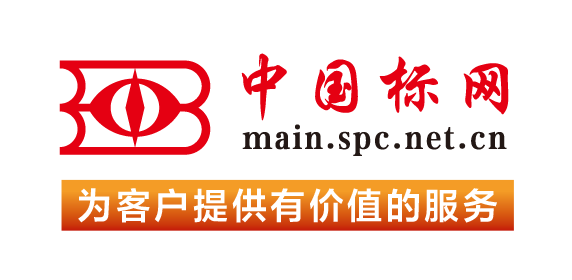【国外标准】 Standard Practice for Static Headspace Sampling of Vapors from Fire Debris Samples
本网站 发布时间:
2024-02-28
开通会员免费在线看70000余条国内标准,赠送文本下载次数,单本最低仅合13.3元!还可享标准出版进度查询、定制跟踪推送、标准查新等超多特权!
查看详情>>
适用范围:
4.1 This practice is useful for sampling fire debris to screen for the presence of ignitable liquid residues prior to extraction with other techniques. It is most appropriate for sampling light to medium range ignitable liquids (such as light oxygenates, lacquer thinners, and other similar volatile compounds or products), and less appropriate for sampling ignitable liquids that have compounds in the heavy range.3, 4, 54.1.1 When sampled for screening purposes, the instrumentation typically utilized is a gas chromatograph with either a mass spectrometer (GC-MS, refer to Test Method E1618) or flame ionization detector (GC-FID).4.2 This practice is generally less efficient at recovering limited quantities of ignitable liquids than Practices E1386, E1412, E1413, and E2154, particularly for higher boiling compounds.4.3 The separation takes place in a closed container and the sample remains in approximately the same condition in which it was submitted. Since only a small aliquot of the sample headspace is removed for analysis, sample reanalysis may be possible.4.4 High concentrations of highly volatile compounds can saturate the headspace, inhibiting the recovery of less volatile components and leading to the detection or identification of only the more volatile compounds in the sample.4.5 This practice is intended for use in conjunction with other extraction techniques, such as those described in Practices E1386, E1412, E1413, and E2154, when analysis of a sample for all classes of ignitable liquids is required or desired.NOTE 1: The headspace specimen (the portion in the syringe) is consumed in the analysis. Preserve an extract for potential reanalysis (see Practice E2451) using an alternative separation and concentration practice, such as those described in Practices E1386, E1412, and E1413, if preservation is required per laboratory policies.1.1 This practice describes the procedure for removing vapor from the headspace of a fire debris container for the purpose of detecting or identifying ignitable liquid residues.1.2 Separation and concentration procedures are listed in the referenced documents. (See Practices E1386, E1412, E1413, and E2154.)1.3 This practice offers a set of instructions for performing one or more specific operations. This standard cannot replace knowledge, skill, or ability acquired through appropriate education, training, and experience and should be used in conjunction with sound professional judgment.1.4 The values stated in SI units are to be regarded as standard. No other units of measurement are included in this standard.1.5 This standard does not purport to address all of the safety concerns, if any, associated with its use. It is the responsibility of the user of this standard to establish appropriate safety and health practices and determine the applicability of regulatory limitations prior to use.1.6 This international standard was developed in accordance with internationally recognized principles on standardization established in the Decision on Principles for the Development of International Standards, Guides and Recommendations issued by the World Trade Organization Technical Barriers to Trade (TBT) Committee.
标准号:
ASTM E1388-17
标准名称:
Standard Practice for Static Headspace Sampling of Vapors from Fire Debris Samples
英文名称:
Standard Practice for Static Headspace Sampling of Vapors from Fire Debris Samples标准状态:
Active-
发布日期:
-
实施日期:
出版语种:
- 推荐标准
- ASTM 51401-21 Standard Practice for Use of a Dichromate Dosimetry System
- ASTM 51956-21 Standard Practice for Use of a Thermoluminescence-Dosimetry System (TLD System) for Radiation Processing
- ASTM A1010/A1010M-24 Standard Specification for Higher-Strength Martensitic Stainless Steel Plate, Sheet, and Strip
- ASTM A1016/A1016M-24 Standard Specification for General Requirements for Ferritic Alloy Steel, Austenitic Alloy Steel, and Stainless Steel Tubes
- ASTM A105/A105M-24 Standard Specification for Carbon Steel Forgings for Piping Applications
- ASTM A1064/A1064M-24 Standard Specification for Carbon-Steel Wire and Welded Wire Reinforcement, Plain and Deformed, for Concrete
- ASTM A108-24 Standard Specification for Steel Bar, Carbon and Alloy, Cold-Finished
- ASTM A1080/A1080M-24 Standard Practice for Hot Isostatic Pressing of Steel, Stainless Steel, and Related Alloy Castings
- ASTM A1090/A1090M-19(2024) Standard Specification for Forged Rings and Hollows for Use as Base Plates in Power Transmission Structures
- ASTM A1115/A1115M-24 Standard Practice for Construction of Mechanically Stabilized Earth Walls with Inextensible Soil Reinforcement
- ASTM A1128-24 Standard Specification for Stainless Steel Shielded, Rubber Gasketed Couplings Having an Integral Restraint Feature for Joining Hubless Cast Iron Soil Pipes and Fittings Where External Restraint Is Required
- ASTM A179/A179M-24 Standard Specification for Seamless Cold-Drawn Low-Carbon Steel Heat-Exchanger and Condenser Tubes
- ASTM A234/A234M-24 Standard Specification for Piping Fittings of Wrought Carbon Steel and Alloy Steel for Moderate and High Temperature Service
- ASTM A242/A242M-24 Standard Specification for High-Strength Low-Alloy Structural Steel
- ASTM A249/A249M-24a Standard Specification for Welded Austenitic Steel Boiler, Superheater, Heat-Exchanger, and Condenser Tubes
 我的标准
我的标准 购物车
购物车 400-168-0010
400-168-0010














